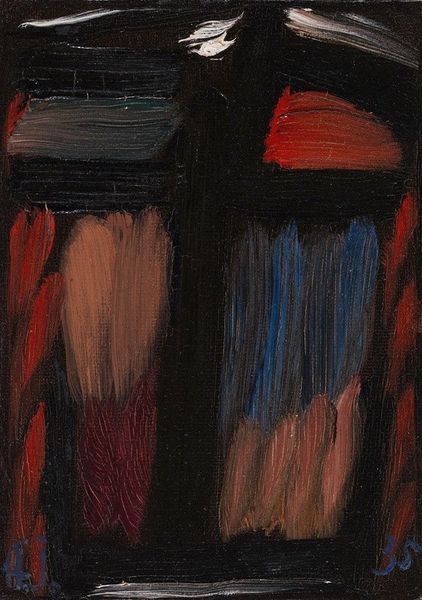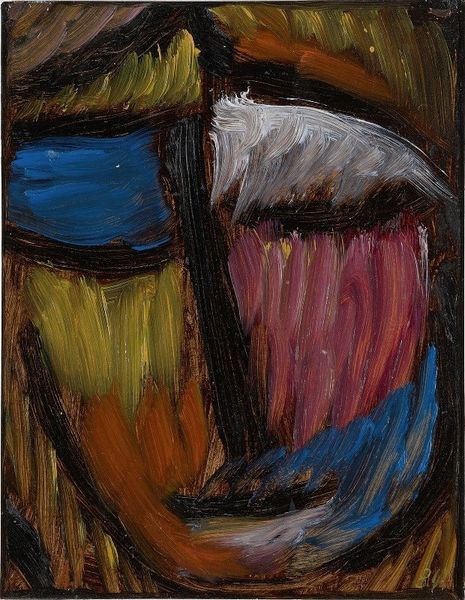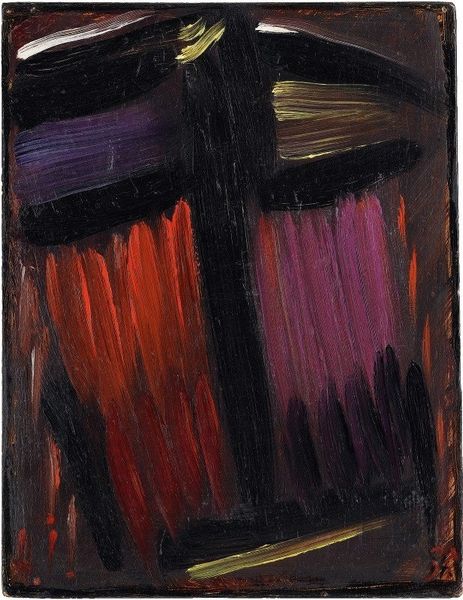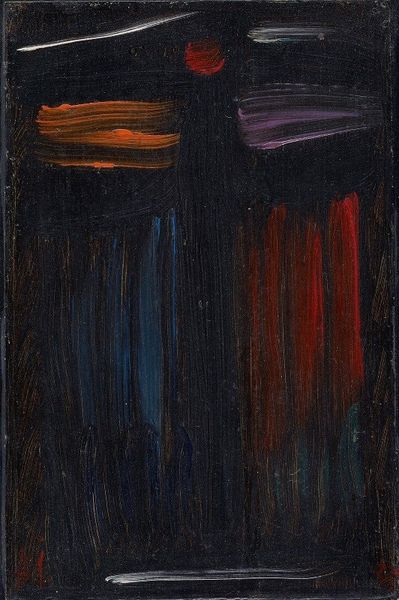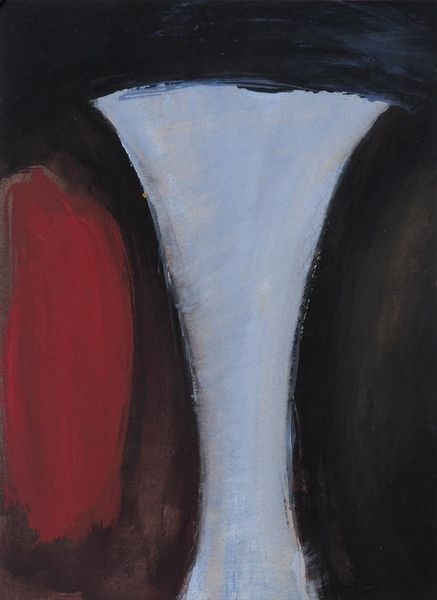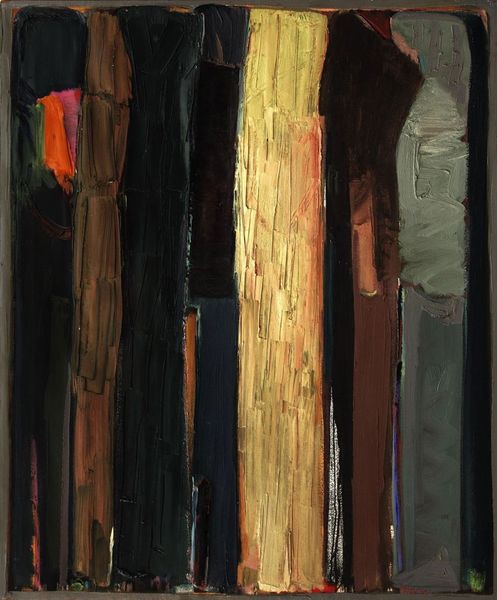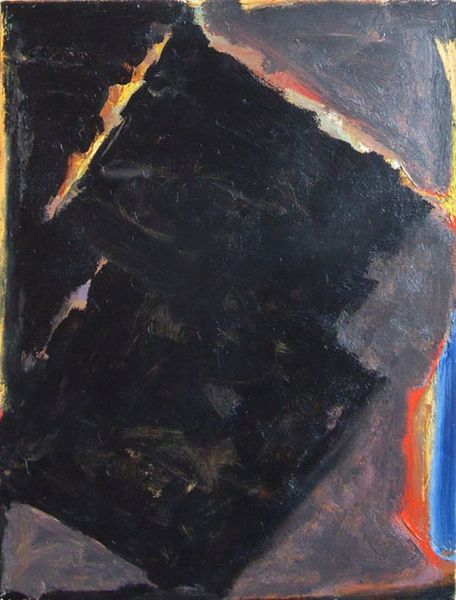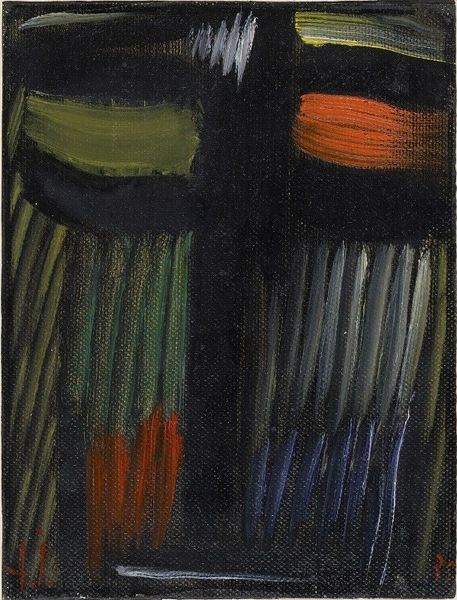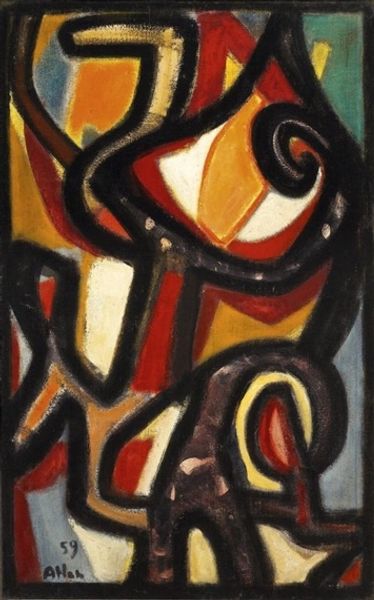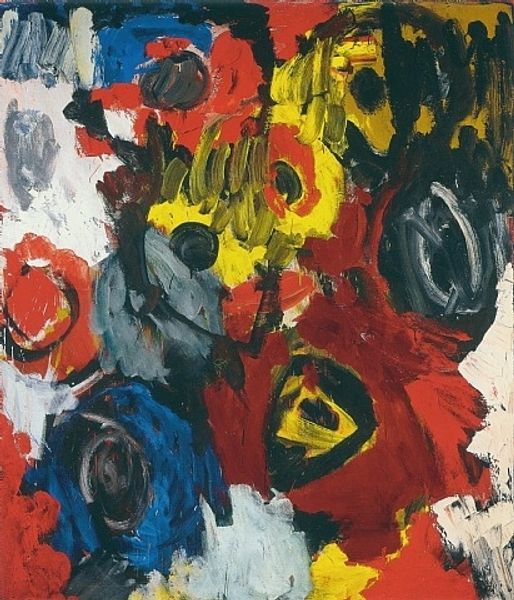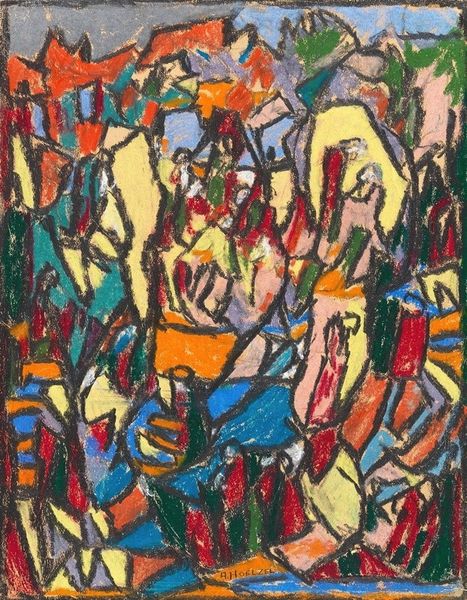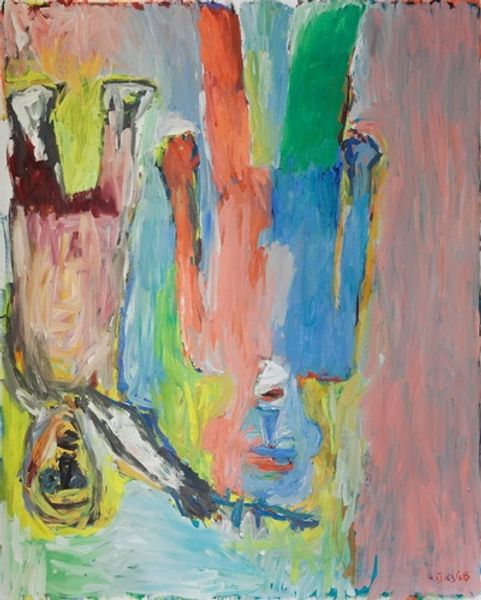
Copyright: Public Domain: Artvee
Curator: Looking at Alexej von Jawlensky's "Meditation No. 70" from 1934, I'm struck by the bold simplicity. What's your initial reaction? Editor: Brooding. There's a heaviness to the brushstrokes and the limited palette that feels almost oppressive, a sort of contained anguish. What was the world like when Jawlensky produced this, and do we see a direct correlation between the making of the artwork and social context? Curator: This work comes from a period of great personal and political turmoil for Jawlensky. It's an oil painting, and you can see the materiality of the paint itself contributing to the sense of unease. The application is almost sculptural in places, a tactile embodiment of his emotional state, considering his suffering from arthritis during its creation. Editor: Right, and he's reducing the figure to these stark geometric shapes, almost like a mask. It’s difficult to divorce this image from its place in history – the rise of fascism, the increasing anxieties of the pre-war era. Are the art critics right in thinking that expressionistic painting of this type served to make inner psychological experience a publicly available and arguably a political thing? Curator: I think it’s a compelling point, it also becomes a very modern concept when art opens to be less concerned about accurate portrayals of appearance. You can feel his mark-making. The impasto is so thick, you can practically see the labor involved, the artist grappling with the medium, forcing these basic materials, pigment and oil, into something meaningful. It speaks to the consumption habits and art market where art began to be treated like a luxury commodity at that period too. Editor: And how do we reconcile that commodification with what appears to be a deeply personal, almost spiritual pursuit on Jawlensky’s part? Is there a tension there that informs our understanding of the work today, given art's ambiguous place in socio-economic hierarchies? Curator: It does invite questions about authenticity and the artist's intent versus the artwork's eventual placement and market value within a wider system of institutions like museums. Editor: Yes, a tension between the raw emotion of the piece and its inevitable absorption into a cultural and financial system. Ultimately, it leaves me wondering about the public responsibility, whether this kind of powerful image shapes or simply mirrors the anxieties of its time. Curator: It leaves us to ponder art as both product and powerful communicator, speaking from within while still inhabiting a complex and mediated space.
Comments
No comments
Be the first to comment and join the conversation on the ultimate creative platform.
